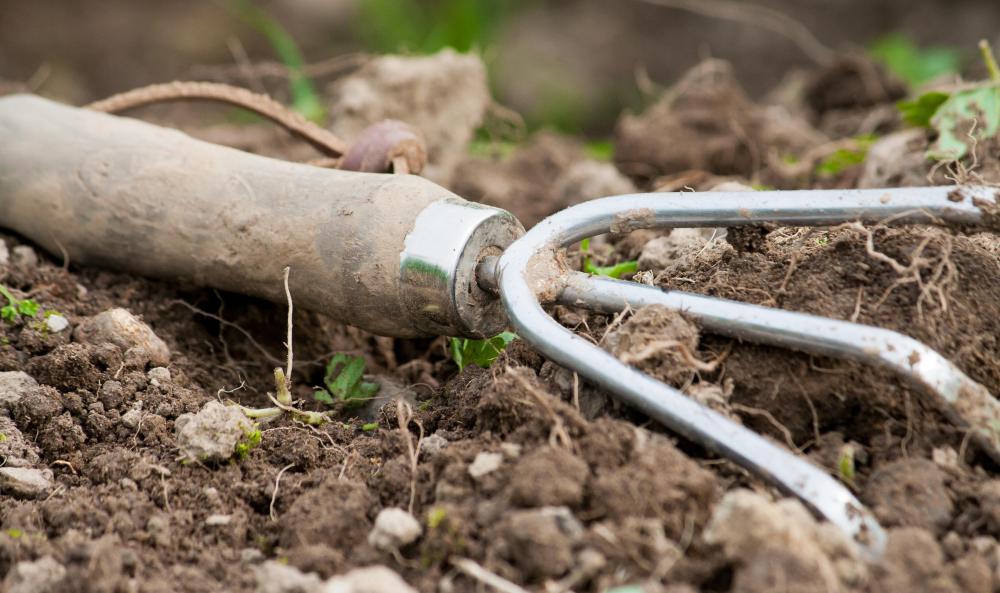At WiseGEEK, we're committed to delivering accurate, trustworthy information. Our expert-authored content is rigorously fact-checked and sourced from credible authorities. Discover how we uphold the highest standards in providing you with reliable knowledge.
What Are the Best Tips for Planting Lilies?
The best time to plant lilies is usually in the fall, just before the first frost. Lily bulbs should be planted in loose, well-drained soil, about 6 inches (15.2 centimeters) deep. After planting lilies, they should be watered sparingly, since overly moist soil can cause fungal problems. The soil covering these plants should be covered with mulch in the fall to help protect the bulbs from becoming damaged during the winter. Lily bulbs should also be dug up and separated every few years to avoid overcrowding.
Fall is usually considered the best time for planting lilies. This should be done before the ground freezes. Some lily varieties can also be planted during the early spring, but they may not bloom the first year that they have been planted.

Gardeners should also consider the type of soil they will be planting lilies in. With the exception of water lilies, most lily varieties seem to prefer loose, well-drained soil. This type of soil prevents water from pooling around the bases and roots of the plants, which can cause problems like root rot and fungal infections.
When planting lilies, a gardener should first loosen the soil with a shovel or garden fork. Organic compost or another organic fertilizer can be added to the soil, if desired. A 6-inch (15.2 centimeter) hole should then be dug for each individual bulb. If a gardener is planting more than one lily, these holes should be at least 6 inches (15.2 centimeters) apart. The bulbs can then be placed in the holes, with the pointed ends up and the flat ends down, and covered with loose soil.

After planting lilies, a gardener should water them. If they are planted during the fall months, several inches of mulch can be used to cover the soil around the lilies. This will help protect the new bulbs against the freezing cold winter temperatures. It will also help keep the ground somewhat moist, but not too wet.
Once they have become established, most lily varieties seem to prefer somewhat dry soil. They will usually only need to be watered about once a week. During rainy weeks, however, lilies will not usually need to be watered. On the other hand, they may need to be watered two or three times during very hot, dry weather.
Lily bulbs will usually multiply every year, which can cause them to become crowded. When this happens, the plants will usually begin to produce smaller and less showy blooms. To help prevent this, experts usually recommend digging up lily bulb clusters every few years. These clusters can then be separated and replanted.
AS FEATURED ON:
AS FEATURED ON:












Discuss this Article
Post your comments